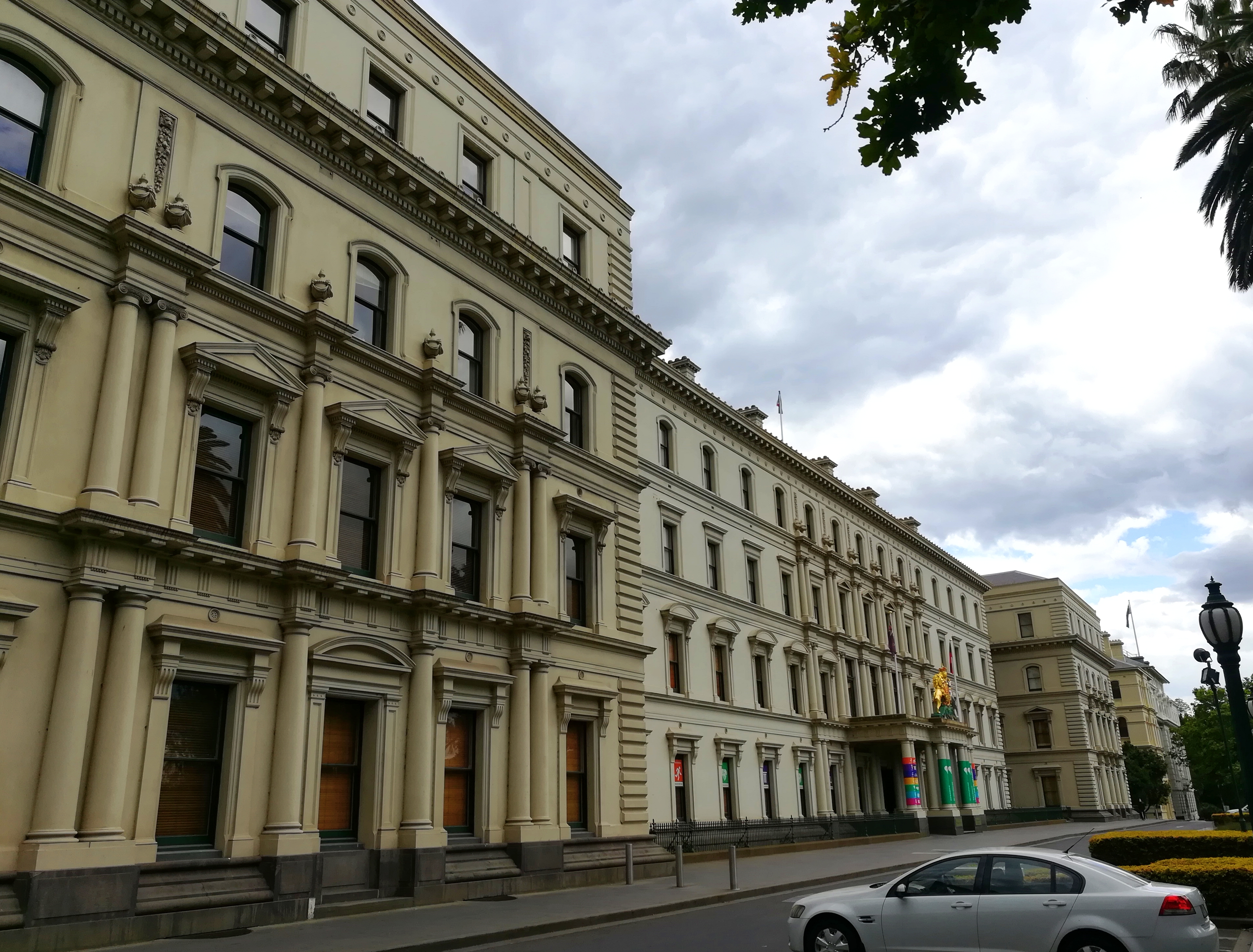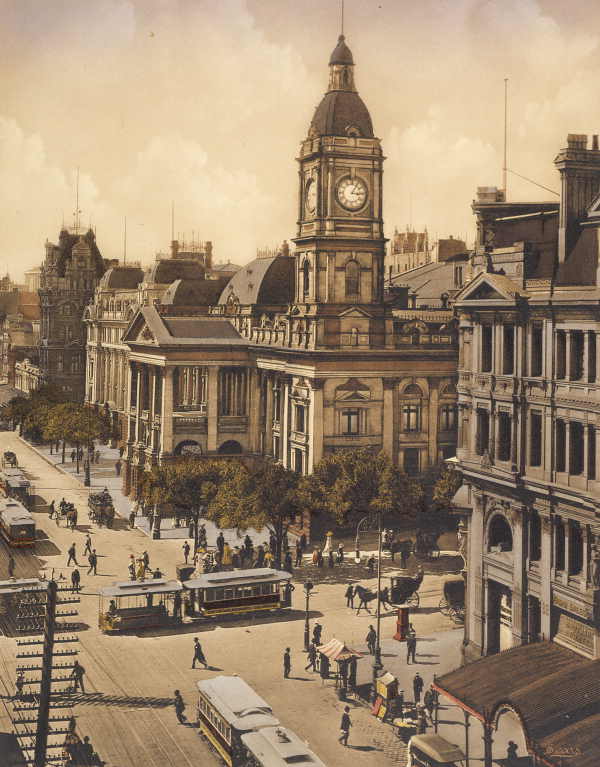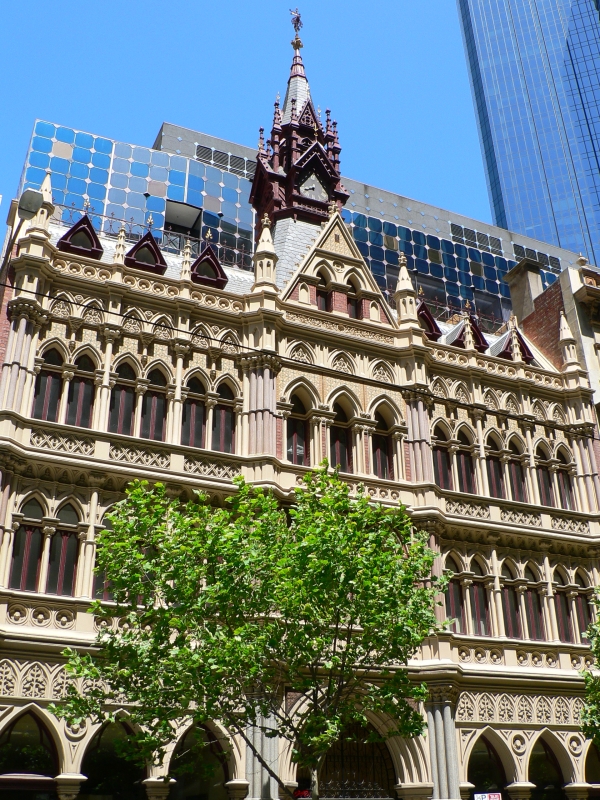|
Joseph Reed (architect)
Joseph Reed (c. 1823–1890), a Cornishman by birth, was a prolific and influential Victorian era architect in Melbourne, Australia. He established his practice in 1853, which through various partnerships and name changes, continues today as Bates Smart, one of the oldest firms continually operating in Australia. Biography Born in 1823 in Cornwall, England, Joseph Reed's early career may have included some local training, and he is known to have worked in the offices of some noted architects in London. He decided to start a new career at the age of 30 in Australia, arriving in Melbourne in 1853, and very soon made a name for himself. The next year he won the design competition for the State Library of Victoria, the Geelong Town Hall in 1855, and designed the Bank of New South Wales Building, Bank of New South Wales in Collins Street in 1856. In 1859, botanist F.Muell. published ''Reedia (plant), Reedia'', a genus of flowering plants from south-western Australia, belonging to ... [...More Info...] [...Related Items...] OR: [Wikipedia] [Google] [Baidu] |
State Library Of Victoria
State Library Victoria (SLV) is the state library of Victoria, Australia. Located in Melbourne, it was established in 1854 as the Melbourne Public Library, making it Australia's oldest public library and one of the first free libraries in the world. It is also Australia's busiest library and, as of 2018, the world's fourth-most-visited library. The library has remained on the same site in the central business district since it was established fronting Swanston Street, and over time has greatly expanded to now cover a block bounded also by La Trobe, Russell, and Little Lonsdale streets. The library's collection consists of over four million items, which in addition to books includes manuscripts, paintings, maps, photographs and newspapers, with a special focus on material from Victoria, including the diaries of Melbourne founders John Batman and John Pascoe Fawkner, the folios of Captain James Cook, and the armour of Ned Kelly. History 19th century In 1853, the decision t ... [...More Info...] [...Related Items...] OR: [Wikipedia] [Google] [Baidu] |
Cyperaceae
The Cyperaceae are a family of graminoid (grass-like), monocotyledonous flowering plants known as sedges. The family is large, with some 5,500 known species described in about 90 genera, the largest being the "true sedges" genus ''Carex'' with over 2,000 species. These species are widely distributed, with the centers of diversity for the group occurring in tropical Asia and tropical South America. While sedges may be found growing in almost all environments, many are associated with wetlands, or with poor soils. Ecological communities dominated by sedges are known as sedgelands or sedge meadows. Some species superficially resemble the closely related rushes and the more distantly related grasses. Features distinguishing members of the sedge family from grasses or rushes are stems with triangular cross-sections (with occasional exceptions, a notable example being the tule which has a round cross-section) and leaves that are spirally arranged in three ranks. In comparison, ... [...More Info...] [...Related Items...] OR: [Wikipedia] [Google] [Baidu] |
East Melbourne
East Melbourne is an inner-city suburb in Melbourne, Victoria, Australia, east of Melbourne's Central Business District, located within the City of Melbourne local government area. East Melbourne recorded a population of 4,896 at the 2021 census. East Melbourne is a small area of inner Melbourne, located between Richmond and the Central Business District. Broadly, it is bounded by Spring Street, Victoria Parade, Punt Road/Hoddle Street and Brunton Avenue. One of Melbourne's earliest suburbs, East Melbourne has long been home to many significant government, health and religious institutions, including the Parliament of Victoria and offices of the Victoria State Government in the Parliamentary and Cathedral precincts, which are located on a gentle hill at the edge of the Melbourne's Hoddle Grid, known as Eastern Hill. The world-famous Melbourne Cricket Ground (MCG) is located in Yarra Park, in the East Melbourne locality of Jolimont. East Melbourne has been affluent sin ... [...More Info...] [...Related Items...] OR: [Wikipedia] [Google] [Baidu] |
Wesley Church, Melbourne
Wesley Church is a Uniting Church in the centre of Melbourne, in the State of Victoria, Australia. Wesley Church was originally built as the central church of the Wesleyan movement in Victoria. It is named after John Wesley (1703–1791), the founder of Methodism. Today Wesley Church is the home of two Uniting Church congregations, the English-speaking Wesley Church, and the Chinese-speaking Gospel Hall. In 1902, the Wesleyan Church in Australia combined with four other churches to form the Methodist Church of Australasia. In 1977, the Methodist, Presbyterian and Congregational Churches further combined to form the Uniting Church. History Wesleyans were part of the life of Melbourne from the beginning of European settlement. The first Christian worship service in Melbourne was led by Henry Reed, a businessman and Wesleyan lay preacher from Launceston, Tasmania. The first service by an ordained Christian minister in Melbourne was led by Joseph Orton, Wesleyan Superintendent o ... [...More Info...] [...Related Items...] OR: [Wikipedia] [Google] [Baidu] |
Collins Street Baptist Church
Collins Street Baptist Church is a Baptist church in central Melbourne, Victoria, Australia. It is affiliated with the Joseph Reed, the architect who designed the Gothic or Romanesque, Collins Street Baptist is in the form of a classical temple, with four Corinthian columns">Romanesque architecture">Romanesque, Collins Street Baptist is in the form of a classical temple, with four Corinthian columns facing the street. According to the church's website, this "reflects the Baptist understanding of the church as a gathered community of believers rather than as a special building". Building In conformity with the Baptist dislike of decoration in churches, the interior has plain plastered walls. It has arched moulded windows, a double aisle and side seats facing the pulpit. A central raised pulpit emphasises the stress in Baptist theology on the Word of God being read and preached as central features of the services of worship. Seating is arranged in a "U" shape around the central ... [...More Info...] [...Related Items...] OR: [Wikipedia] [Google] [Baidu] |
William Butterfield
William Butterfield (7 September 1814 – 23 February 1900) was a Gothic Revival architect and associated with the Oxford Movement (or Tractarian Movement). He is noted for his use of polychromy. Biography William Butterfield was born in London in 1814. His parents were strict non-conformists who ran a chemist's shop in the Strand. He was one of nine children and was educated at a local school. At the age of 16, he was apprenticed to Thomas Arber, a builder in Pimlico, who later became bankrupt. He studied architecture under E. L. Blackburne (1833–1836). From 1838 to 1839, he was an assistant to Harvey Eginton, an architect in Worcester, where he became articled. He established his own architectural practice at Lincoln's Inn Fields in 1840. From 1842 Butterfield was involved with the Cambridge Camden Society, later The Ecclesiological Society. He contributed designs to the Society's journal, ''The Ecclesiologist''. His involvement influenced his architectural style. He als ... [...More Info...] [...Related Items...] OR: [Wikipedia] [Google] [Baidu] |
St Paul's Cathedral, Melbourne
St Paul's Cathedral is an Anglican cathedral in Melbourne, Australia. It is the cathedral church of the Diocese of Melbourne and the seat of the Archbishop of Melbourne, who is also the metropolitan archbishop of the Province of Victoria. The cathedral was designed by the English Gothic Revival architect William Butterfield and completed in 1891, except for the spires which were built to a different design from 1926 to 1932. It is one of Melbourne's major architectural landmarks. Location St Paul's Cathedral is in a prominent location at the centre of Melbourne, on the eastern corner of Swanston and Flinders Streets. It is situated diagonally opposite Flinders Street station, which was the hub of 19th-century Melbourne and remains an important transport centre. Immediately to the south of the cathedral, across Flinders Street, is the new public heart of Melbourne, Federation Square. Continuing south down Swanston Street is Princes Bridge, which crosses the Yarra River, l ... [...More Info...] [...Related Items...] OR: [Wikipedia] [Google] [Baidu] |
World Heritage Site
A World Heritage Site is a landmark or area with legal protection by an international convention administered by the United Nations Educational, Scientific and Cultural Organization (UNESCO). World Heritage Sites are designated by UNESCO for having cultural, historical, scientific or other form of significance. The sites are judged to contain " cultural and natural heritage around the world considered to be of outstanding value to humanity". To be selected, a World Heritage Site must be a somehow unique landmark which is geographically and historically identifiable and has special cultural or physical significance. For example, World Heritage Sites might be ancient ruins or historical structures, buildings, cities, deserts, forests, islands, lakes, monuments, mountains, or wilderness areas. A World Heritage Site may signify a remarkable accomplishment of humanity, and serve as evidence of our intellectual history on the planet, or it might be a place of great natural beauty. A ... [...More Info...] [...Related Items...] OR: [Wikipedia] [Google] [Baidu] |
Melbourne Town Hall
Melbourne Town Hall is the central city town hall of Melbourne, Victoria, Australia, and is a historic building in the state of Victoria since 1867. Located in the central business district on the northeast corner of the intersection between Swanston and Collins Street, it is the seat of the local municipality of the City of Melbourne, and has been used for multiple purposes such as concerts, theatrical plays and exhibitions. History Melbourne was officially incorporated as a town on 13 December 1842, with Henry Condell as its first Mayor. However, it wasn't until 1854 that its first Town Hall was completed. Begun in 1851, the work ground to a halt with the beginning of the Victorian gold rush. The foundation stone of a new, grander Town Hall was laid on 29 November 1867 by the visiting Prince Alfred, Duke of Edinburgh, after the demolition of the first. The current Town Hall officially opened on 11 August 1870 with a lavish ball, which was personally funded by the Lord Mayo ... [...More Info...] [...Related Items...] OR: [Wikipedia] [Google] [Baidu] |
Scots' Church, Melbourne
The Scots' Church is a Presbyterian church in Melbourne, Victoria, Australia. It was the first Presbyterian church to be built in the Port Phillip District (now the state of Victoria) and is located on Collins Street. It is a congregation of the Presbyterian Church of Australia and has been described as "an icon for well over a hundred years". Background The Reverend James Forbes was recruited to come to Australia as a Presbyterian minister by the Revd John Dunmore Lang, arriving in Melbourne from Sydney via boat on 20 January 1838. He found that a retired Church of Scotland minister, the Revd James Clow, had arrived on 25 December 1837 and had commenced an afternoon service from 2 pm and 4 pm according to Presbyterian forms in a basic building constructed west of William Street and north of Little Collins Street (now the site of the AMP centre). Clow had been a Church of Scotland chaplain in Bombay, India but had retired and was of independent means. He had intended to settle ... [...More Info...] [...Related Items...] OR: [Wikipedia] [Google] [Baidu] |
Melbourne Trades Hall
Victorian Trades Hall is the headquarters of the Victorian Trades Hall Council. It is located on the corner of Lygon Street and Victoria Street, just north of the Melbourne central business district, in the suburb of Carlton, Melbourne, Victoria, Australia. It is the world's oldest trade union building. History In 1856 the Melbourne Trades Hall Committee was formed and received a grant of land from premier John O'Shanassy to build the Melbourne Trades Hall. The original Trades Hall was opened in May 1859, built by workers as an organising place for the labour movement in Melbourne, and as a medium to educate workers and their families. The workers financed the construction of the building themselves. It was built in the style of the parliament buildings which were just down the road, and over the years has been further developed. The original building was made of timber with galvanised iron roofing. Between 1874 and 1925, the Hall was rebuilt and upgraded by Joseph Reed, t ... [...More Info...] [...Related Items...] OR: [Wikipedia] [Google] [Baidu] |
St Michael’s Uniting Church, Melbourne
St Michael's Uniting Church is a church in Collins Street in central Melbourne, Australia. Originally the Collins Street Independent Church, a Congregational Union of Australia Church, and later Collins Street Uniting Church, St Michael's has become well known as a centre of liberal theology and political radicalism under its recent Executive Minister Dr Francis Macnab (1971-2016). History The first church on this site was built in 1839-41, one of the first Churches in the Port Phillip District (now the state of Victoria). That Church was demolished in 1863 to make way for the present building, completed in 1866. It was designed by noted and successful architect Joseph Reed, who had also designed the Melbourne Town Hall, and later the Royal Exhibition Building. It is classified by the National Trust of Australia and listed by Heritage Victoria. In 1978 the interior underwent a major restoration, refurbishment and modification of the church was undertaken, raising the communion ... [...More Info...] [...Related Items...] OR: [Wikipedia] [Google] [Baidu] |


_-_Copy.jpg)





